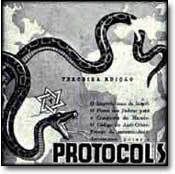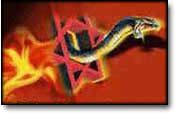National Geographic, full, The Hebrew for Hasidism, hasidut, denotes piety or saintliness, an extraordinary devotion to the spiritual aspects of Jewish life.
Groups of Hasidim were found in talmudic times and even earlier. The Saints of Germany in the Middle Ages were called the Hasidim of Ashkenaz. In the early eighteenth century, the group surrounding the Baal Shem Tov ["Master of the Good Name", known as the Besht] was, at first, only one of a number of such groups of pneumatics. But eventually the Beshtian group became the dominant one; the others either vanished from the scene or became absorbed in the Beshtian group.
From the beginning, Hasidism centered on a charismatic personality, the tzaddik. (Zaddik in the usual English transliteration) This term has an interesting history of its own. In the Bible and the talmudic literature, the tzaddik ("righteous man") is the ordinary good man to whom the Hasid is superior. But since the members of the group were themselves termed Hasidim, a different term had to be found for the spiritual leader and for this the old term tzaddik was adopted. In this way the older roles were reversed. The Hasid is the follower of the Zaddik, with the latter being the superior pietist.
Mysticism for the Masses?
Hasidism was, at first, an elitist movement, consisting of a small company of pietists seeking proximity to the Baal Shem Tov in order to be guided by him in the spiritual path. But since the idea of loving every Jew was stressed by the Baal Shem Tov and his disciples as a highly significant religious ideal, it is not surprising that, as the movement spread, it attracted to itself Jews with no pretension to excessive piety who believed in the power of the Zaddik's prayers to help them in their distress.
The Zaddik then came to function both as a spiritual guide to the few thirsting for a closer relationship with God and as a man of prayer and a miracle-worker for the masses. Not to be overlooked, however, is that the masses, too, had mystical yearnings, which they believed the Zaddik could satisfy. The description of Hasidism as "mysticism for the masses" ignores the elitist aspects of the movement, but is nonetheless a fair representation of the appeal of Hasidism as it came to be.
Hasidism Took Hold
Dov Baer of Mezirech, the foremost disciple of the Baal Shem Tov, sent out his own chosen disciples to spread his understanding of the Baal Shem Tov's teachings abroad, and those men became Zaddikim in their own right in different Eastern European centers. Personalities such as Levi Yitzhak of Berditchev, Shneur Zalman of Liady, the "Seer" of Lublin and other disciples of Dov Baer are the spiritual heroes of Hasidism.
The spread of the movement was assisted by anther disciple of the Baal Shem Tov, Jacob Joseph of Polonnoye, author of the first Hasidic book to be published. Jacob Joseph's Toledot Yaakov Yosef was published in the town of Koretz in 1780 and this was followed by a spate of works by the masters in which new doctrines were expounded.
Through these works and through the missionary activities of Dov Baer's disciples, Hasidism spread rapidly to Volhynia, Poland, Russia, and Lithuania, despite, or perhaps because of the opposition of Mitnagdim, the rabbinic and communal leaders who tended to see the new ideas as rank heresy. It has been estimated that by the beginning of the nineteenth century, Hasidism had won over to its ranks almost half the communities of Eastern Europe. A Few things not mentioned in the "Report"
Wednesday, 3 April 2013
National Geographic Report About 'Hasidic Life'
Posted @
15:50
![]()
Subscribe to:
Post Comments (Atom)
![[9_10_s22.jpg]](https://blogger.googleusercontent.com/img/b/R29vZ2xl/AVvXsEjTXnQay9wzz0E6nVHrVhaHKoq_zYXDqZjijHlNDQzj90MZzInrCuVX4ciFYCiBfZ7lhlgr2bBhhnl7ddWbhdih5JbXjQYbA605TNyiq046bQqjG2A4S-nHTmh1VBTQSG6tmc23wq47QQ/s1600/9_10_s22.jpg)




No comments:
Post a Comment